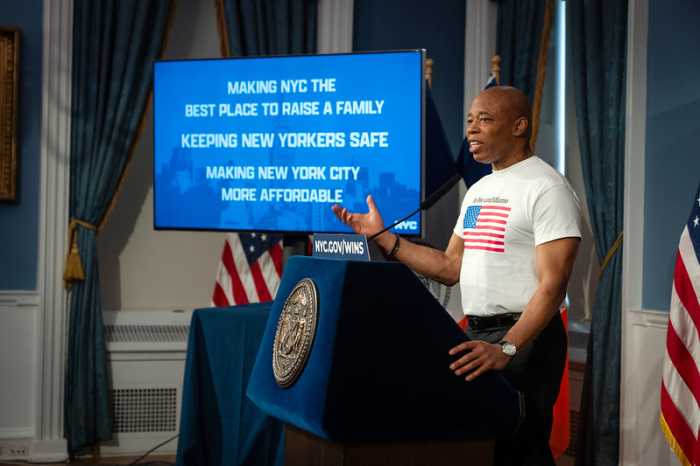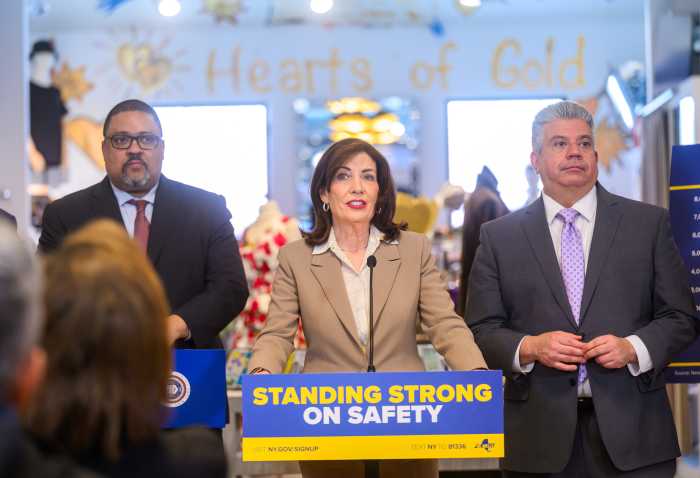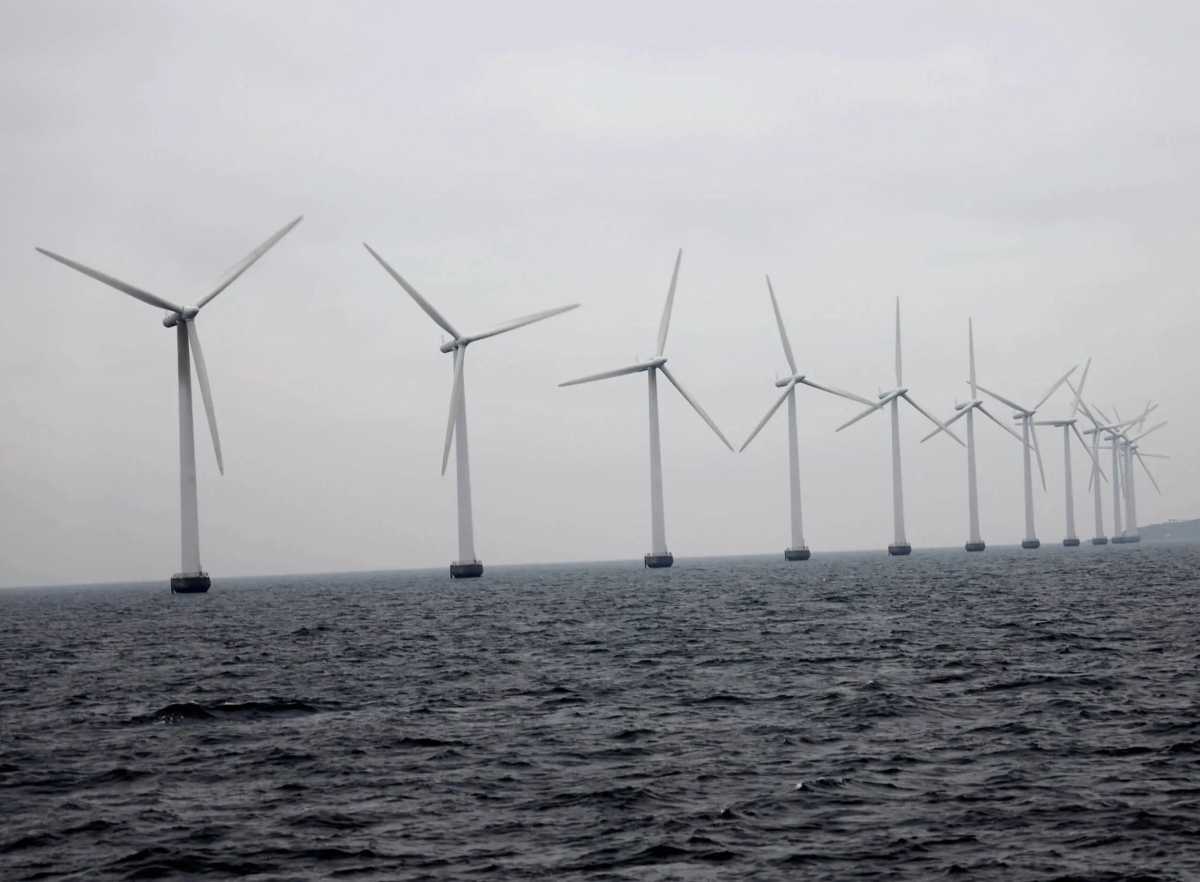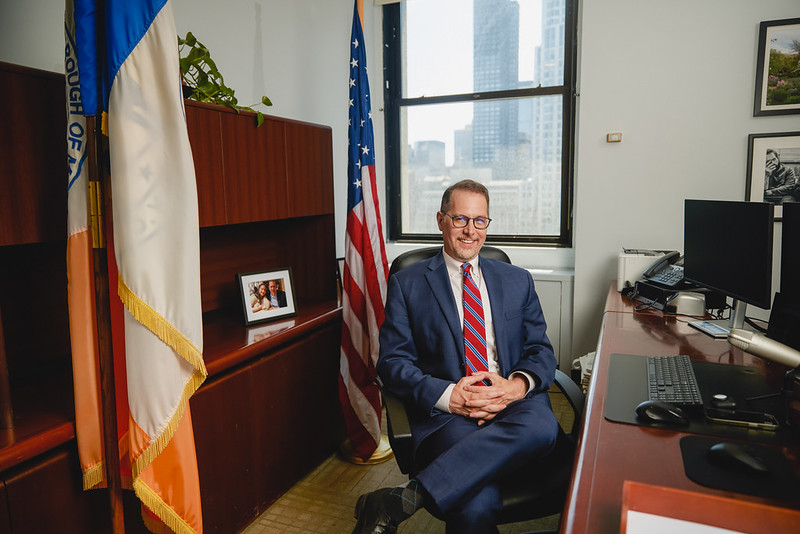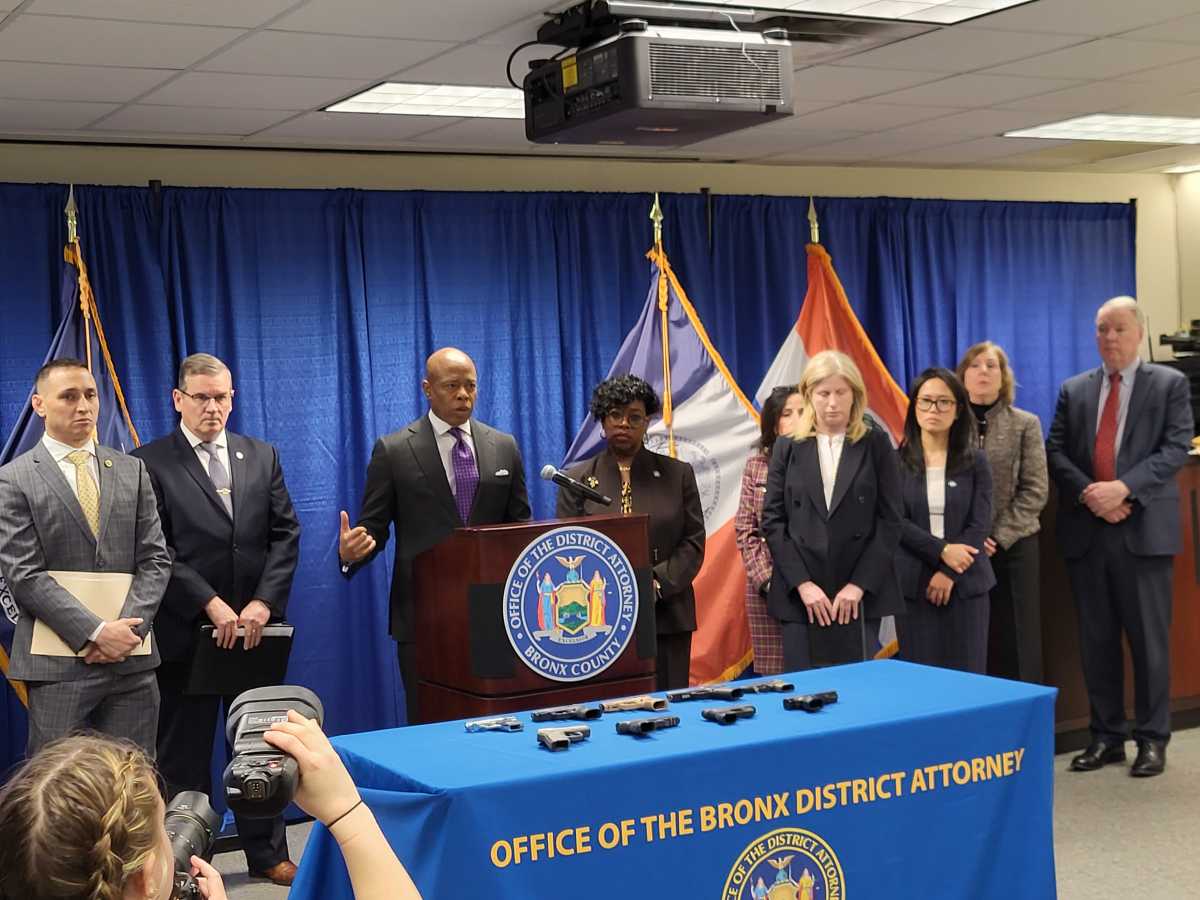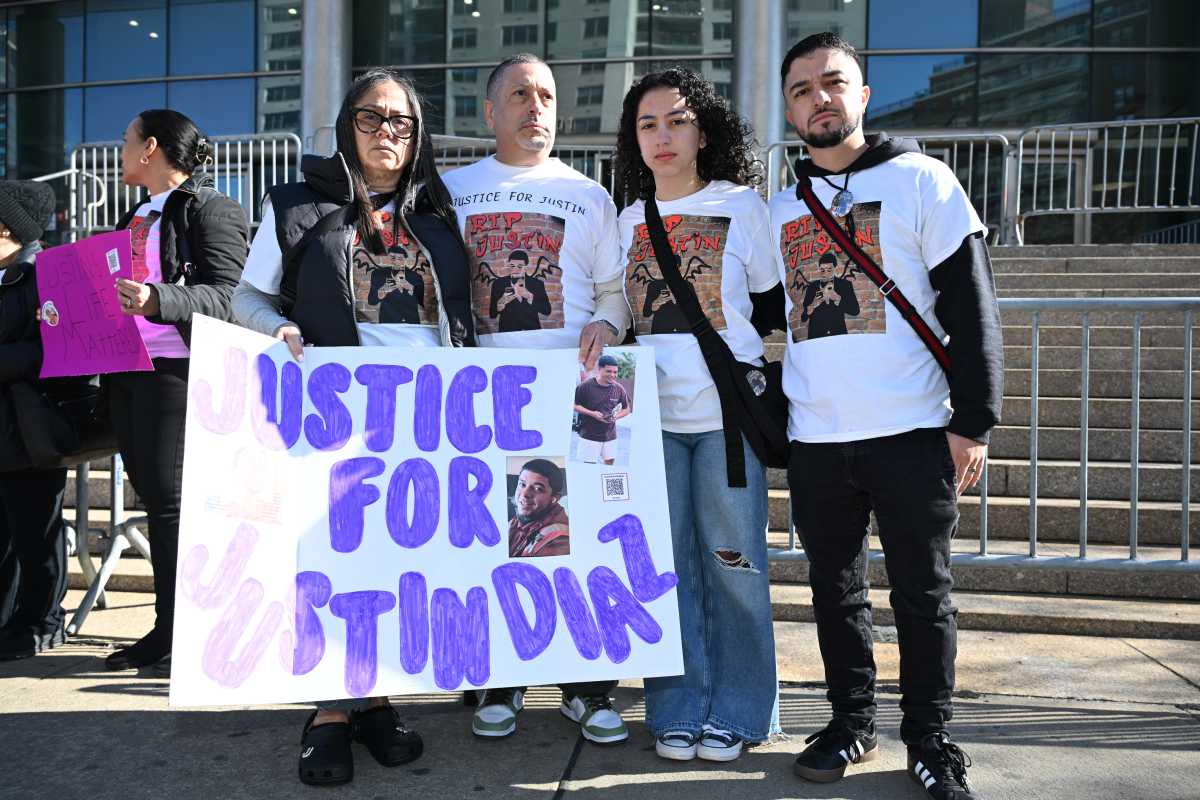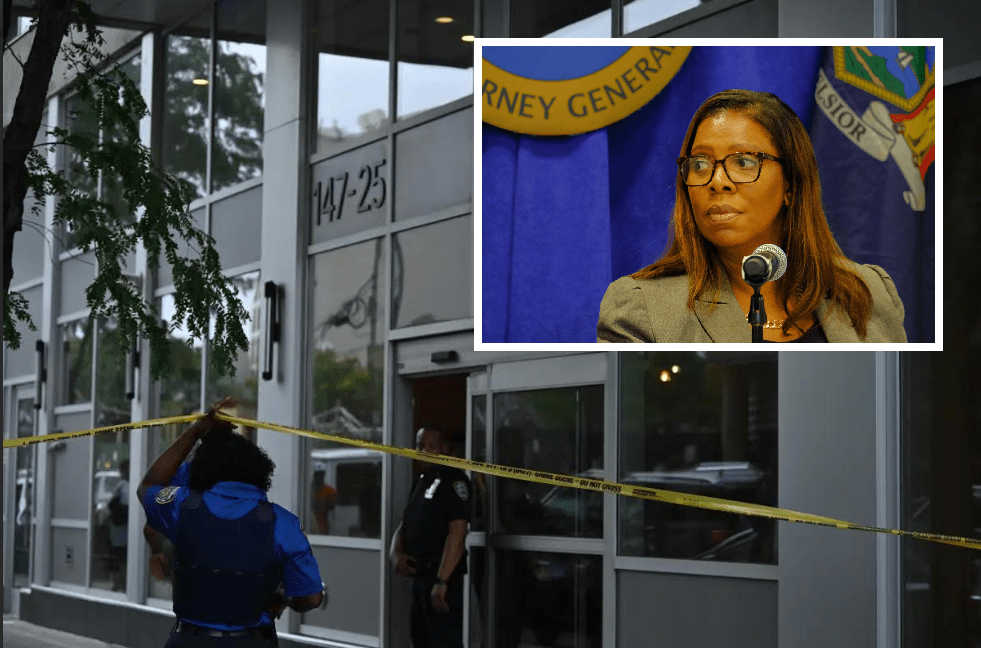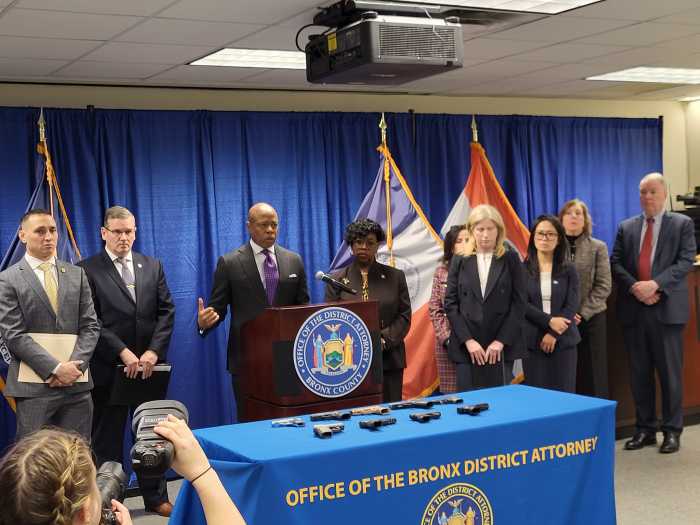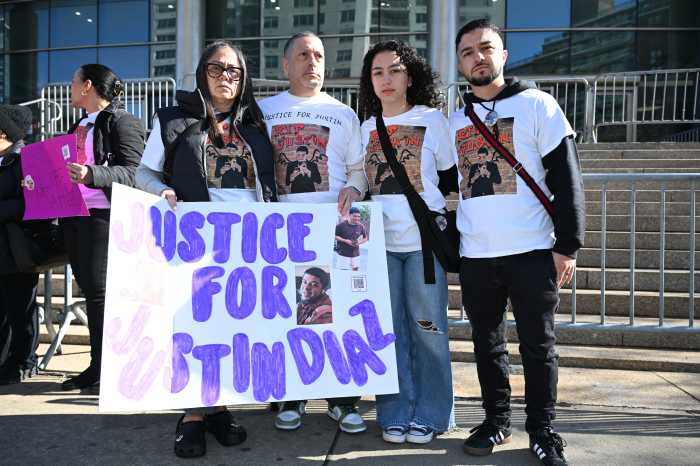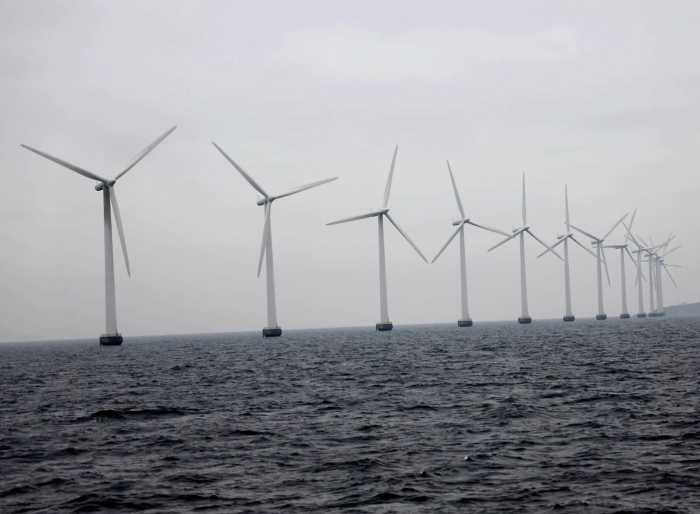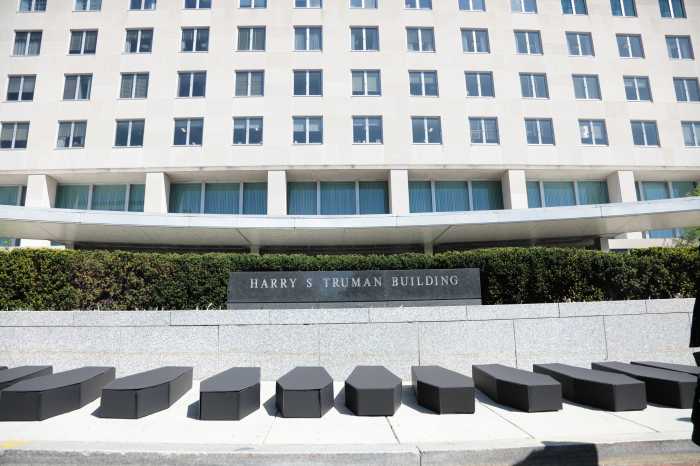Concern and worry raced through the mind of Hofstra University student Dot Clarke as she rode a train into Penn Station Saturday for Manhattan’s March for Our Lives rally against gun violence.
It wasn’t midterms clouding her thoughts as she headed into the city. In a country beset by one mass shooting after another, Clarke feared she could be the next name on the list of those brought down by a bullet.
“I kept wondering, ‘who will kill me today?’ ” she said. “It’s not normal for us to feel this way.”
Clarke and thousands of others — among them, high school students, parents pushing their babies in strollers, and grandparents — assembled en masse at the western edge of Central Park to give voices of support to survivors of the Valentine’s Day shooting at a Parkland, Florida high school.
Sir @PaulMcCartney marches with the #MarchforOurLives protesters @Newsday amNewYork pic.twitter.com/a2XTqglCab
— Alison Fox (@AlisonFox) March 24, 2018
Some chanted. Others hoisted protest signs. Everyone walked together, beginning at Central Park West and 61st Street with a final destination being just east of Times Square.
At the rally’s starting point, a student who survived the shooting at Parkland’s Marjory Stoneman Douglas High School read the names of the 17 killed, including Gina Rose Montalto, 14. The teenager’s grandmother, Mary Lou Montalto, 73, of Westchester County, attended the rally.
“She loved life,” Montalto said of Gina. “She was a caring, loving, giving, helpful — I can’t say enough wonderful things about her.”
The rally’s message was a simple one — enough is enough.
“It kind of sparked this motivation for me to stand up and do something,” said Katie Zimmermann, 18, a high school student from Union County, New Jersey, referring to the Parkland shootings.
Zimmerman said a family friend lives in Parkland and was inside the high school at the time of the shootings.
Mayor Bill de Blasio and Gov. Andrew M. Cuomo joined the rally as did Paul McCartney. The music legend’s writing partner in the Beatles, John Lennon, lost his life to an assassin’s bullet in 1980, just a blocks north of where the rally kicked off.
Cuomo told reporters one day won’t “change the dynamic” but it’s a start, and he saw the rally as a turning point.
“They’re going to remain engaged, they’re going to remain informed and they’re going to maintain their political activism. And at the end of the day politicians respond to votes,” he said. “And this represents real votes.”
Many students said they were tired of normalizing the idea that one can get shot at their school or in a crowded public space. Protesters chanted “NRA has got to go,” “Break the silence, end gun violence,” and “Vote them out.”
Many hoped to follow the lead of a vocal group of Parkland students who have already spurred lawmakers in their home state and a few others to enact gun reform.
Survivors of the Florida massacre organized a massive rally in Washington D.C. Saturday against gun violence. Smaller rallies with the same message as the ones in Manhattan and Washington took place around the country and the world.
Official crowd totals for the Manhattan event weren’t available but earlier estimates predicted between 100,000 and 200,000 people would to take part in the rally, which began at about 12:30 and ended three hours later. Police said there were no arrests.
Indeed, a sea of demonstrators packed Manhattan streets typically teeming with cars but, at least for a few hours, given over to nothing but foot traffic.
Some students said they were tired of the same political responses after every new mass shooting, others that they wer emarching in a show of solidarity against the NRA and what they said was the group’s influence on government legislation.
“It time to stop politicians from taking bribes from the NRA,” said Sky Dellasala, 20, of Brooklyn. “Our generation is going to change this.”
Following the march, many participants left their signs leaning against the barricades on Sixth Avenue, their messages still there long after they left.
With Maria Alvarez and Joan Gralla



